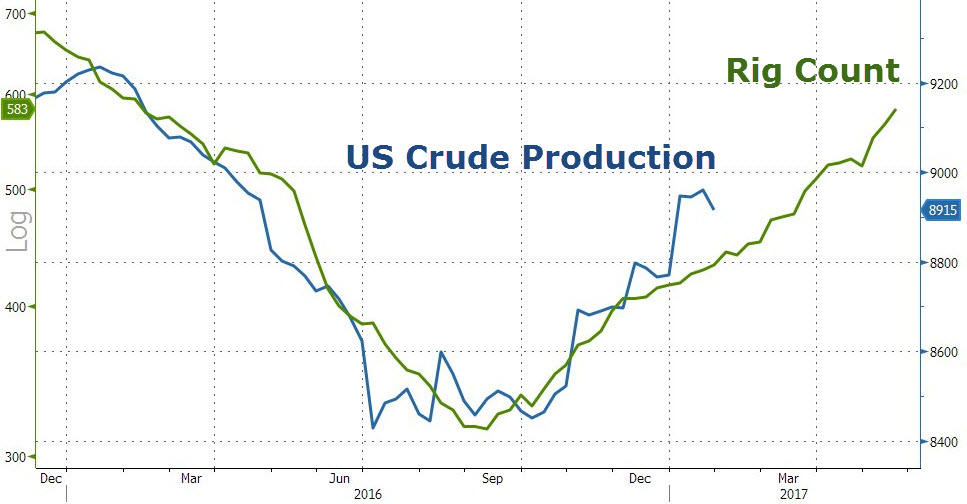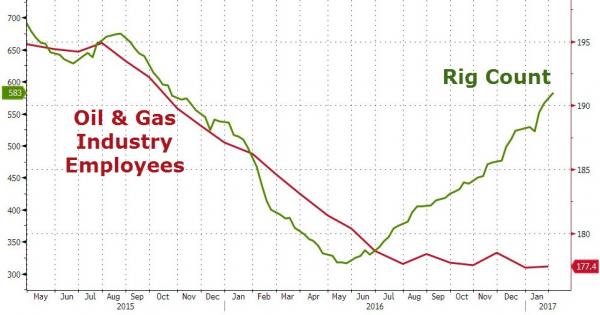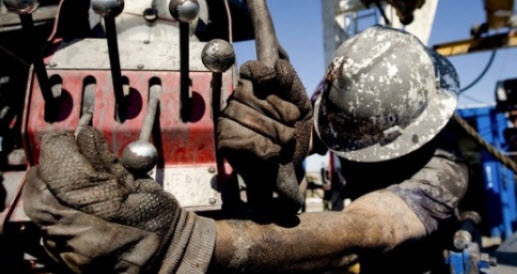For the third week in a row, the US oil rig count rose dramatically (up 15 to 583 – the highest since October 2015). This is the biggest 3-week surge in rig counts since April 2013… (the biggest 3-week percentage gain since Nov 2009)

Production continues to trend with rig count…

However, as exuberant as this number is, job gains are nowhere to be found as the robotization of the industry (amid more ‘real’ costs of capital) provide no help to Americans…

As Bloomberg notes, the addition of just 100 jobs to industry payrolls lags well behind the pace of the overall U.S. economy, which added 227,000 workers during the month. The growing use of robots and other efficiencies honed over the course of a 2 1/2 year market downturn means more work is getting done with fewer people. Confirming previous fears that robots are repacing roughnecks.

The inevitable advance of technology and automation has upended industries such as car manufacturing and food processing. Now robotics is making its way into the oil fields by helping drilling activities and putting together heavy pipes.
For companies, more automation would mean higher efficiency, safer operations, and ultimately, lower drilling and production costs. For oil rig workers, it would mean that part of the jobs lost during the oil price downturn would never return. Also, part of the new job openings would require a different type of skill set: for example, information technology and advanced computer skills.
But even if automation is expected to increase, and some day take over drilling sites and drillships, it is not the norm in the oil and gas industry today. While there have been early adopters, the oil and gas drilling business is still years away from becoming an automated activity.














Leave A Comment